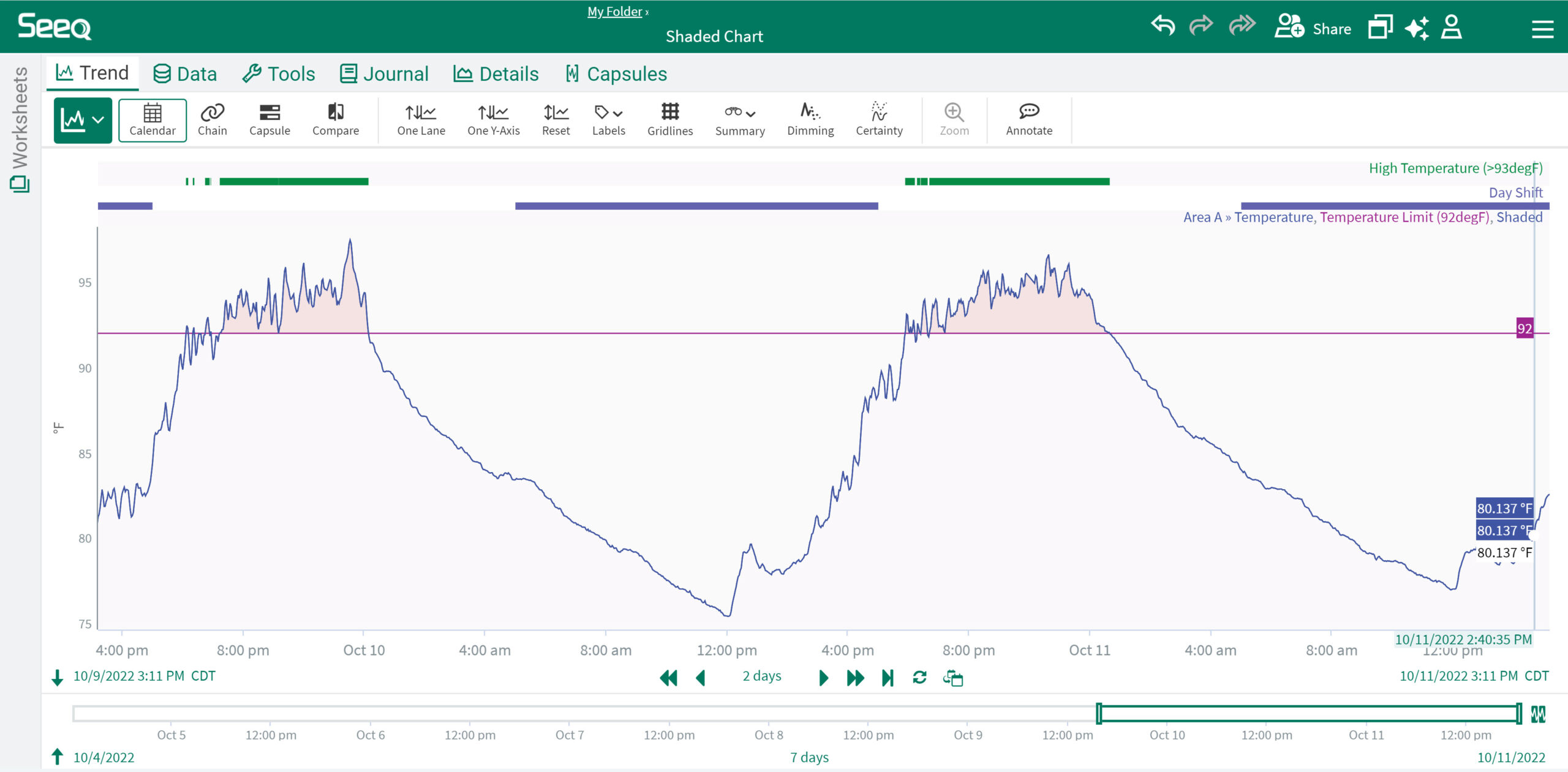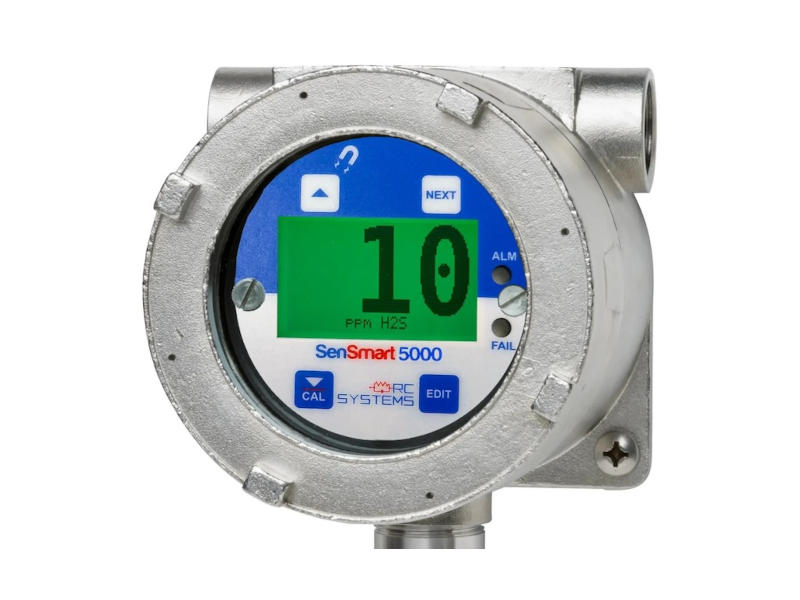Modern enterprise asset management (EAM) systems provide manufacturers flexibility and help reduce machine downtime and many other benefits.

Any manufacturing solution worth its salt needs to have clear, measurable benefits. Luckily, modern enterprise asset management software delivers in a big way. To understand those benefits, though, we first need to take a trip back in time to see where modern enterprise asset management (EAM) software came from — and how it got so good at addressing physical assets, predictive maintenance, asset performance and all the other elements you juggle on a daily basis.
Traditional versus modern EAM
We all came from somewhere, and modern EAM is no exception. Its predecessor, traditional EAM, built a solid foundation — but today’s software has taken that foundation and created brand new possibilities for manufacturers.
If you think you know EAM, think again. Here’s the difference between a traditional EAM system and one that’s fast, smart and evolved:
Traditional EAM
Traditional EAM is a lot like computerized maintenance management system (CMMS) software. Both are focused primarily on maintenance management, from tracking physical assets to overseeing their life cycles. However, a traditional EAM system goes further than most CMMS products, offering more insight into the maintenance schedules and asset information necessary to stay informed on the factory floor, enterprise wide.
That being said, traditional EAM is far from perfect. A few of its weaknesses include:
- Trapping data: Once data is entered into a traditional EAM system, it can’t easily be accessed, all but eliminating the ability to perform analytics.
- Limiting functionality: Traditional EAM often focuses too narrowly on machine reliability, leaving you blind to a whole world of additional disruptors of production performance.
- Wasting time: It’s neither fast nor simple to deploy a traditional EAM solution.
Modern EAM software
Modern EAM software, on the other hand, is about evolution. It provides a simplified ands streamlined approach to all the physical assets on the plant floor, giving up-to-date insights on asset lifecycle, asset performance, predictive maintenance and more. With fast, easy deployment and high adoption rates among workers, modern EAM software can quickly improve transparency, accountability, data accessibility, communication and more.
Modern EAM software takes the best elements of traditional EAM and CMMS and adds its own cutting-edge spin. The result is something fresh, powerful and promising for manufacturers everywhere that fits the needs of the modern factory (not the factory of 20+ years ago).
How modern EAM software helps physical assets
Although modern EAM software benefits physical assets and goes beyond machine downtime, let’s face it: This solution probably needs to prove itself on the foundational stuff before you’ll trust it to tackle the more intricate elements. Modern EAM software puts minimized machine downtime at the top of its benefits list. Here are a few examples:
Transparency
Physical assets don’t exist in a vacuum — but when you don’t have insights into their lifecycles and reliability, they might as well not exist at all. Modern EAM software provides the transparency necessary to perform asset management on an intricate level, allowing you to immediately see and interact with information about performance, maintenance history, quality control and more. Better yet, this transparency is factory-wide — which means everyone has access to the insights they need to complete tasks with confidence.
Data analysis
Physical assets tell stories. Modern EAM software allows you to capture and analyze those stories, providing a clear picture of the truth even when multiple stakeholders are involved. For example, having access to the most recent failure history data is valuable — but being able to review data on every failure, maintenance event and part replacement in real-time on a mobile device, allows you to recognize patterns and identify the most relevant solutions without leaving the site of issue.
Overall asset maintenance
Asset maintenance involves a lot of moving parts, but modern EAM software gives you a single, unified view of data from multiple sources such as human input, integrated systems, and machine sensors. Plus, EAM software can be automated to capture a failure event the instant it happens and send a notification to relevant parties indicating the suggested response. This can help you juggle some of the most critical elements of overall asset management, including:
- Asset performance
- Asset tracking
- Asset lifecycle
- Spares inventory management
- Maintenance schedules
- Maintenance processes
- Maintenance cost control.
Three EAM software benefits
Modern EAM software can help manage and maintain physical assets, but it goes beyond reducing machine downtime. Other software benefits include:
1. Flexibility.
If 2020 and 2021 taught us anything, it’s that manufacturers need to be flexible. Modern EAM software is built around it. Take, for example, the impact of the COVID-19 pandemic on supply chains. Industries of all kinds saw significant shortages — which meant manufacturers needed to be keenly aware of what they had access to and what they didn’t. By providing a higher level of visibility to obstacles to efficiency and revealing functional workarounds when possible, modern EAM software helped manufacturers stay flexible even in the face of uncertainty. Plus, a user-friendly interface and real-time mobile access kept workers confident and informed even as plans rapidly changed, and kept managers in the loop from wherever they were (at the plant or at home).
2. Cost savings.
Asset management can get expensive when so many machines, stakeholders and data points are involved. Modern EAM software doesn’t just make those costs more visible — it also helps you identify patterns of wasted time and resources. That, in turn, helps you create a sleek, streamlined workflow with modern EAM software as your guardrail, empowering you to take cost savings into your own hands without worrying about a huge misstep.
3. Future-proofing.
Unlike traditional EAM, modern EAM software won’t get old because it is built to be capable of constant evolution — for example, by being cloud-based instead of requiring hardware or system overhauls for every significant update. It responds to the needs of today’s manufacturers, helping you future-proof your operation by anticipating even the slightest change in asset performance or preventive maintenance needs. It also allows manufacturers to achieve a level of agility, adaptability, and efficiency that enables competitiveness in any market environment.
How to maximize benefits with modern EAM software
Modern EAM software can do a little bit of everything. It helps track, maintain and manage physical assets; it can schedule maintenance and repairs to maximize uptime without interrupting workflow; it directs the right people to the right places to solve specific problems; it even goes beyond machine downtime to identify other sources of interruption, inefficiency and stoppage such as material, quality, or training issues that interrupt production..
Of course, all those benefits don’t just magically appear. Modern EAM software is a tool, and to make the most of it, users have to know how to use that tool in all the right ways:
- Be open-minded: If traditional EAM left you with more than a few frustrations, you might be hesitant to give modern EAM software a chance. Approach with an open mind — and remember, this is the manufacturing equivalent of going from a 1990’s desktop computer to a smartphone.
- Let EAM adapt to you: You don’t have to use modern EAM software in a specific way. Instead, learn the ins and outs of the system to decide how the transparency, automation, asset maintenance and data analysis tools work best for the organization.
- Think bigger: It’s easy to think of EAM as a tool for minimizing machine downtime, limited to physical assets and maintenance schedules. Think outside the box so you don’t miss out on other insights modern EAM software can provide such as in-depth asset tracking software, digitized inventory management, real-time mobile access to a rich database of factory-wide information and more.
Traditional EAM systems are out, and modern EAM software is in. You won’t find any better approach to enterprise asset management — or to data management, preventative maintenance, workflow automation, resource allocation, transparency, protecting physical assets and more.
The future is here, and keeping up with it is as easy as implementing modern EAM software.
– This originally appeared on L2L’s wesbite. L2L is a CFE Media content partner.



